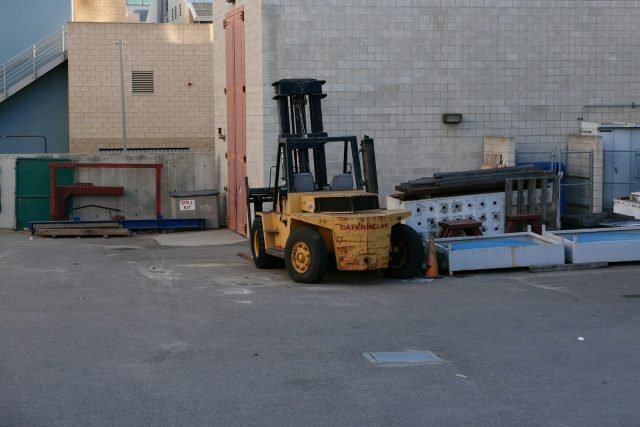
As businesses keep on expanding at high speeds, offloading equipment becomes more intricate and critical. Previously, many firms struggled with equipment loss, damage, or delay during the expansionary periods due to poor offloading practices. Now, with more demand and faster operations, equipment offloading securely is critical in the assurance of efficiency and the safety of precious equipment. Effective planning and executing reliable processes ensure equipment arrives at the company securely and in place for utilization with no disruption in the flow of operations. Learn the following crucial steps for ensuring equipment offloading securely in high-growth environments for businesses, including organization, technology, and employee training. Having these factors in one’s knowledge makes the workflow more effective and reduces costly mistakes during the expansion period.
Understanding High-Growth Needs
In fast-growing environments, the demands on equipment offloading increase significantly. As operations expand, companies must adapt to handle larger volumes and more complex logistics. Recognizing the specific needs of a high-growth setting is essential to prevent delays, damage, or loss during offloading. It’s important to consider factors that can affect the process and plan accordingly. These factors include various aspects of your business and environment.
Here are some key points to keep in mind:
- Increased volume of equipment deliveries
- Limited space for unloading and storage
- Higher risk of equipment damage
- Need for faster turnaround times
- Coordination among multiple teams
- Compliance with safety regulations
- Use of technology for tracking and communication
By understanding these needs, businesses can tailor their offloading processes to fit their unique challenges. This awareness helps create smoother operations and reduces the risk of costly errors, keeping growth on track without compromising equipment safety.
Planning Your Offloading Process
Creating a clear and efficient offloading plan is crucial for success in high-growth environments. Without a well-thought-out strategy, equipment offloading can become chaotic, leading to delays, damage, or misplaced assets. A strong plan includes defining the sequence of steps, allocating resources, and ensuring communication between all parties involved. It also involves selecting the best locations for unloading that optimize space and reduce bottlenecks. Partnering with trusted service providers who understand your growth demands can significantly improve the offloading experience. For companies looking to streamline this aspect of their operations, it’s important to elevate the ordinary through NSA Storage, where advanced solutions and customized services make a real difference. This approach allows businesses to adapt quickly to fluctuating needs while maintaining control over their equipment. By investing time in planning and leveraging the right support, organizations can reduce risks and keep their growth momentum steady. This methodical preparation helps keep operations smooth, protecting both the equipment and the bottom line.
Note: Early industrial warehouses revolutionized goods handling by implementing systematic loading and unloading processes, which paved the way for modern logistics and inventory management practices.
Choosing Safe Storage Options
Selecting safe and reliable storage options is essential when off-loading equipment in high-growth environments. As operations increase in size, more secure storage is required to ensure valuable tools and machinery are protected from damage, loss, or weather conditions. Storage spaces have to be flexible to accommodate different numbers and sizes of equipment. They must also provide easy access to minimize downtime during retrieval. Depending on equipment type, some spaces may require climate control or special security arrangements. Warehouses, storage rooms, and special on-site areas come with their pros and cons, and it’s vital to know your specific needs. Safety considerations in the form of surveillance, security access, and proper lighting allow you to secure your assets more effectively. Efficient layout in the storage spaces also translates to smooth operations, forestalling crowding and confusion. Emphasis on safety in storage options ensures equipment is in good working order and available for use to ensure smooth operations even during high growth. Having the proper decisions made concerning storage options provides the foundation for efficient equipment handling and value preservation for your assets.
Technology for Secure Tracking
Using technology to track equipment during offloading is essential in high-growth environments where large volumes and fast pace can increase the risk of loss or damage. Tracking systems help businesses maintain real-time visibility of their assets, improving accountability and reducing errors. Choosing the right technology depends on your specific needs and the complexity of your operations. Common tracking tools include barcode scanners, RFID tags, GPS devices, and inventory management software. These tools allow staff to monitor equipment location and status throughout the offloading process, making it easier to identify any issues early. Effective tracking technology also supports better communication between teams and helps streamline workflows by automating data collection and reporting. As a result, businesses can enhance security, minimize downtime, and make informed decisions faster. When selecting tracking technology, consider factors such as ease of use, integration with existing systems, and scalability to match your growth. Implementing these tools creates a more organized and secure offloading process that keeps equipment safe and operations running smoothly.
- Real-time visibility improves asset management
- Automated data reduces manual errors
- Better communication speeds up workflows
- Scalable systems support future growth
Insight: Tracking technology acts like a digital watchtower, keeping a constant eye on equipment to make sure nothing gets lost and everything stays on schedule. This simple yet powerful tool helps businesses stay organized even when things are moving fast.
Training Staff for Safety
Proper training for staff is key to ensuring equipment is offloaded safely and efficiently. When employees understand the correct procedures and safety protocols, the risk of accidents and damage decreases. Training also helps teams communicate better and work more smoothly during busy periods. Regular refresher sessions keep everyone up to date with best practices. Investing in staff training builds a safer work environment and supports the success of your offloading operations as your business grows.
Final Thoughts on Offloading
Successfully offloading equipment in high-growth environments requires planning, the right tools, and trained staff. By focusing on secure storage, effective tracking, and clear processes, businesses can reduce risks and keep operations running smoothly. Taking these steps helps protect valuable equipment and supports continued growth without disruption. Careful management of offloading is a vital part of maintaining efficiency as your business expands.










